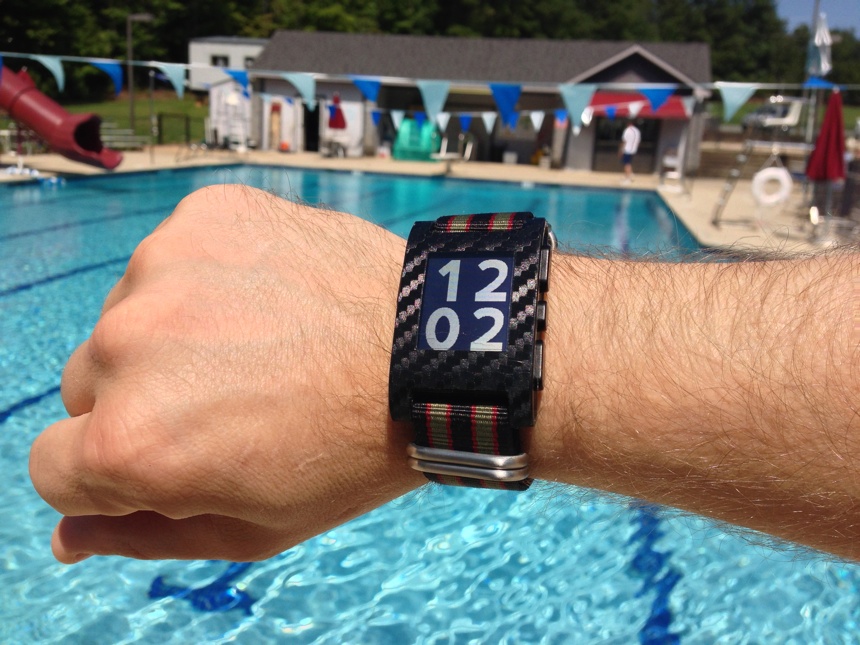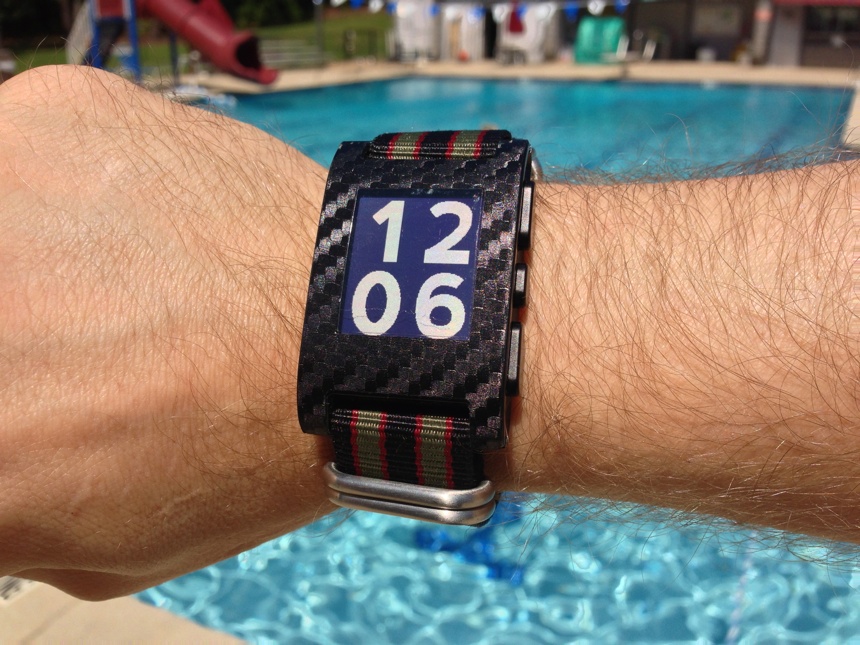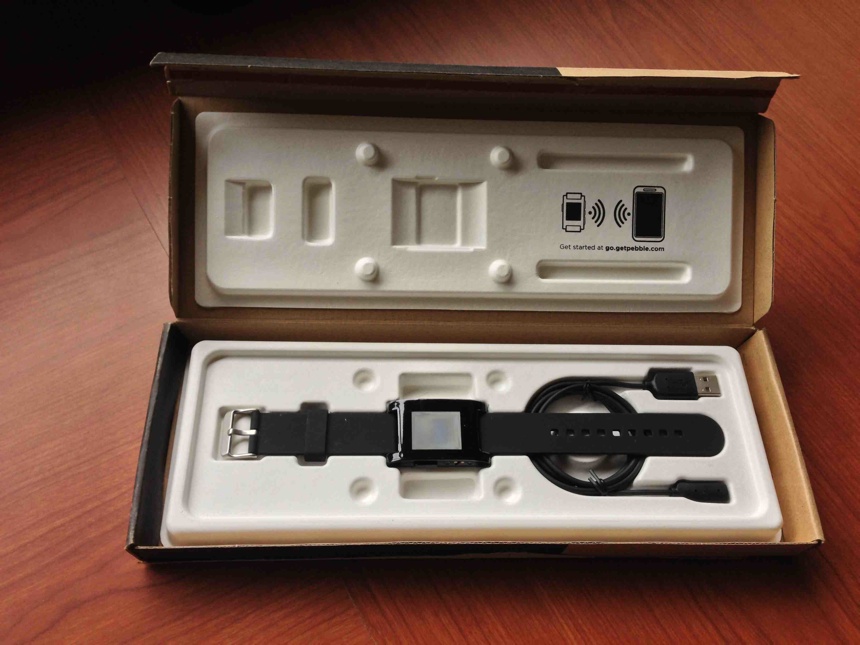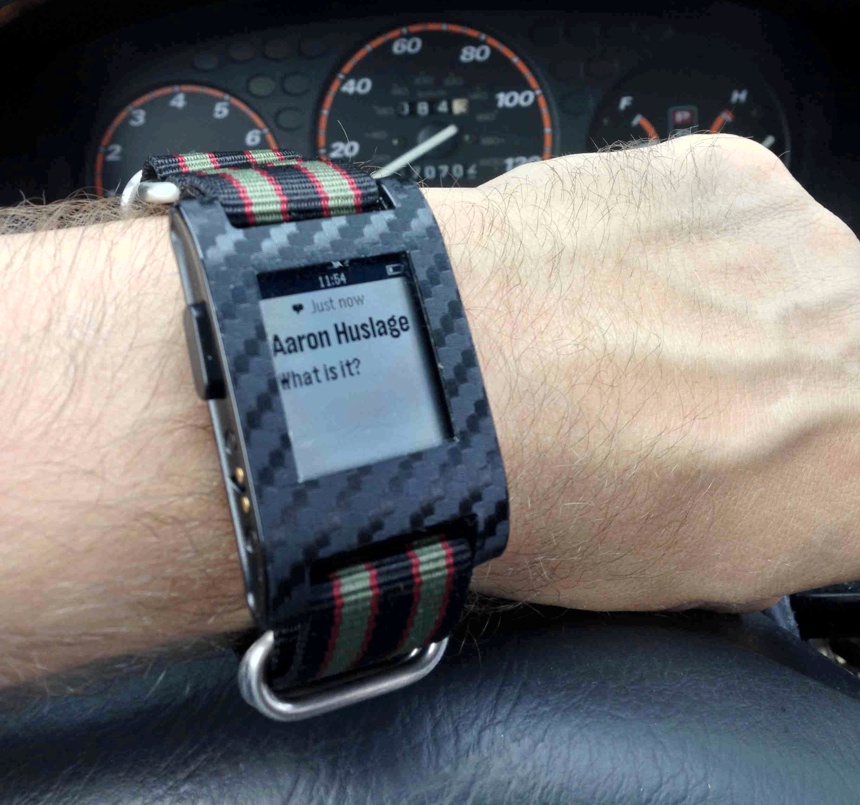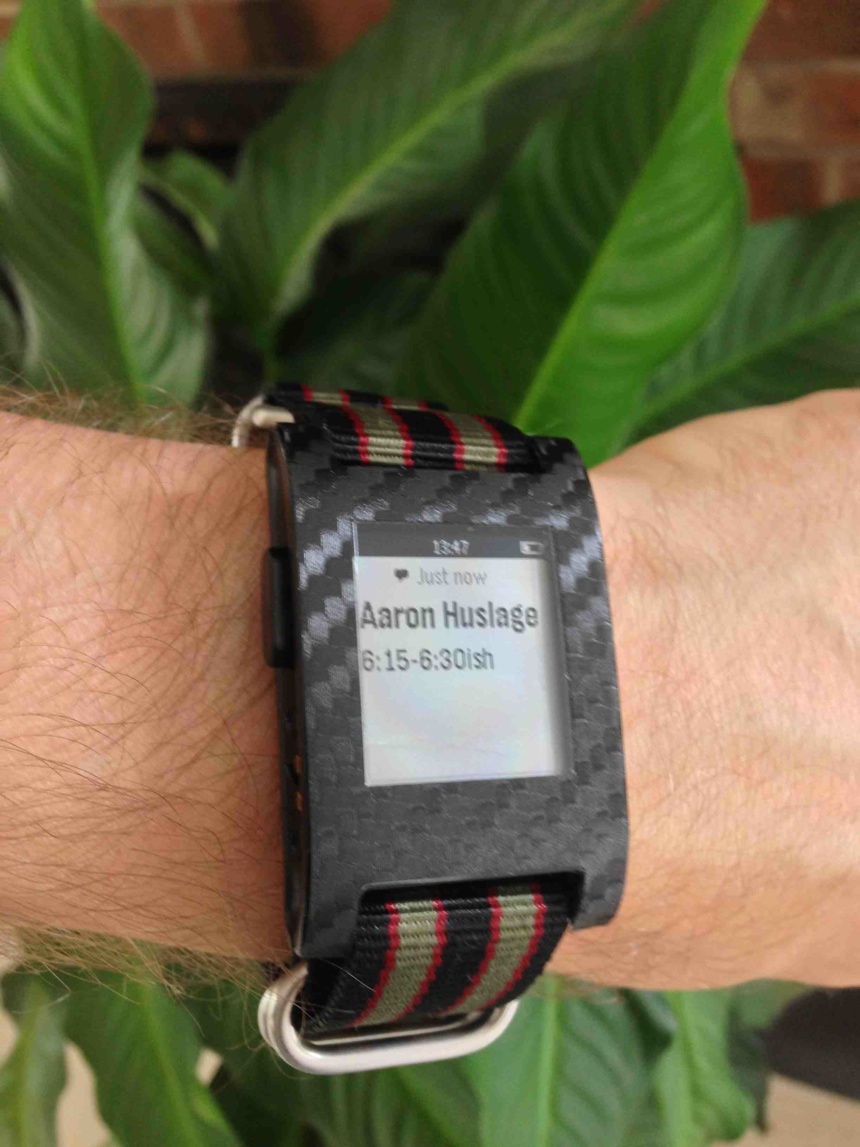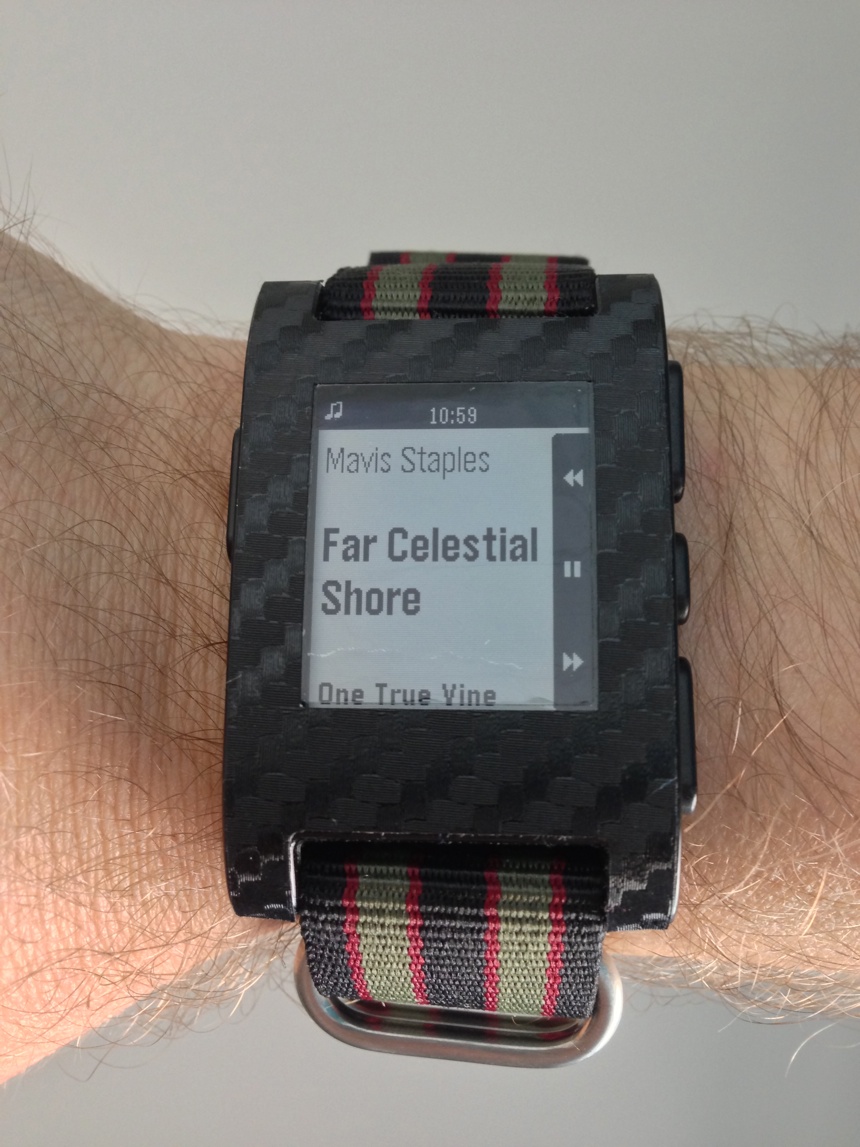I first held a Pebble watch in my hands in January. I’ve had it on and off my wrist since March. Since that time, it’s undergone considerable refinement in how it behaves as a smartwatch. But is it a good watch?
Smartwatches have been around for decades, especially if we include the earliest Pulsar calculator and Casio Databank watches. The Casio Databank has a calculator, appointments, contact name, address and phone numbers. It’s almost a proto-PDA. Then we actually got wrist PDAs that ran PalmOS from Fossil. Microsoft and Fossil made the SPOT watches, Sony Ericsson made watches that had Bluetooth in them, yet none of these has enjoyed widespread adoption. Why is now different? What’s changed in the approach?
We now have mobile phones that buzz, beep, and otherwise try and notify us of about a thousand things a day. Calendar appointments, reminders, Twitter / Facebook, incoming email, phone calls, all things that make smartphones the ultimate distraction.
If the phone is the center of all our communications, of all our non-face-to-face-interactions, pulling it out of pocket is still an inconvenience.
Watches like the Citizen Proximity Bluetooth and the Casio G-Shock notify you of an incoming call, SMS, or email, but they don’t tell you any more information about it – who was calling? What were they emailing about? You still end up reaching for your phone to find out.
Part of the problem is the definition of a smartwatch: Do we want simple and wearable second screens for our mobile devices or is there greater demand for a standalone device?
This represents what I think of as the two different approaches whether a smartwatch is made by a watch company first, tech company second, or a tech company first, watch company second. Where a watch company has mastered things we take for granted, case design, pushers, crystals, etc, a tech company may spend much effort re-inventing these things without the benefit of years of experience. On the other hand, watch companies don’t necessarily have the benefit of years of experience designing what amounts to small wrist-worn computers, and the human-computer-interaction that is required.
Which brings us to Pebble. Pebble was founded by people who had worked on smartwatches for years. They made the Allerta InPulse smartwatch for Blackberry, with a case milled on a 5-axis CNC machine. When investment didn’t come, they turned to Kickstarter and launched the second-largest crowdsourced campaign the Internet has seen so far.
This led to a change in materials, and choices that get made on the way to reaching a realistic price point. Instead of the InPulse’s aluminum case and charging by MicroUSB, now we have a two part plastic case with four plastic pushers, and two contacts for connecting the proprietary magnetic charge cable.
From a business standpoint, Pebble began life as InPulse, the underfunded startup, crowdsourced by a hugely successful Kickstarter campaign, got investment and launched in BestBuy retail across the US. It’s a great success story for a small company that held fast to the vision they wanted to create.
The full name of the watch is the Pebble E-Paper Watch for iPhone and Android. That’s a bit of a mouthful, so it’s commonly called Pebble. When you take Pebble out of the packaging, it needs to be paired with an Android or iOS device. The easiest way to do this on iOS is to open the app and tap the ‘connect’ icon. The app will connect the iPhone to the watch, set the time, and advise you on how to get phone calls and notifications to pass from the phone to the watch. Mostly, this means toggling a single setting in Bluetooth settings and then toggling the notification setting for the desired app.
When Pebble was first launched, iOS would forget to send notifications reliably to the Pebble if pairing was broken and re-established, either due to range or battery life. This meant that only SMS and phone calls would prompt notifications on the watch. Pebble has since realized how important email notifications are and placed email settings in the app so that email notifications are no longer skipped under any circumstances. Email settings are stored in the device’s secure password keychain and not shared with Pebble-the-company. The good thing is that notifications are delivered almost immediately to the watch from the phone.
The Pushers
Pebble has four pushers, one on the left side and three on the right. Top and bottom right are up/down, or other actions as noted on-screen (call answer/hangup, FF and REW for the music player) and center right is an action or select button. Top left is a BACK button. The menu structure is very easy to use, and the whole experience feels very consistent and friendly. The only time you press a button and aren’t sure what the result will be is when cycling through watch faces which can be done using all buttons except the center right action button.
Features & Uses
Pebble gets the time from the phone when pairing is established. It notifies you of incoming calls, text messages, and emails, and any other app notifications you wish to enable. It permits you to change the watch face, and it acts as a remote control for the music player on the phone. SMS, text, and email notifications work reliably, especially since Pebble integrated email checking into their application. Other notifications work, but don’t always work reliably. They need to be toggled off and on in iOS settings in order to re-enable them to push to the iPhone. This applies to iOS 6, and may change in iOS 7 when released. For Android users, the situation is a little more smooth but requires using one of the many third party notification forwarder applications. in iOS, whatever active media player happens to be playing, Pebble will control it. One of the good things about the notification implementation is that notifications arrive on the watch nearly instantly, without any lag between phone and wrist. The screen has a very wide viewing angle, so glancing at the wrist while driving for a split second is easy and not distracting. Pebble gets this right.
Music control is a top level function – pressing center right once opens the menus, pressing it again selects music, at which point it becomes a play/pause toggle and top and bottom right control REW and FF.
Pebble does not come with a weather function out of the box. It also only comes with a few watch faces. What makes Pebble interesting is that it’s flexible. Additional watch faces are easily found and installed from http://www.mypebblefaces.com or created at http://watchface-generator.de. These are the efforts of a community of users and developers who are generously making their work available. Pebble’s done a good job of fostering this community and there are no shortage of dials.
At the time of writing, there are at least 34 apps on Google Play Store for enhancing Pebble behavior. These are things as simple as switching the ringer on an Android phone from the watch to as complex as a golf rangefinder or a GPS bike computer using the phone’s GPS speed, distance and altitude. One of them provides weather from the phone, and there’s a similar app for iOS called “httPebble” which works in conjunction with many faces to get data from the Internet into a watch face, from weather to altimeter, or even just dual timezones.
There are many faces available for it, and more being created all the time.

